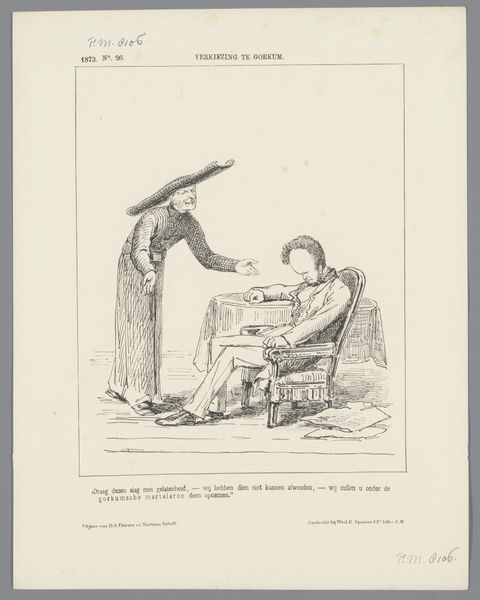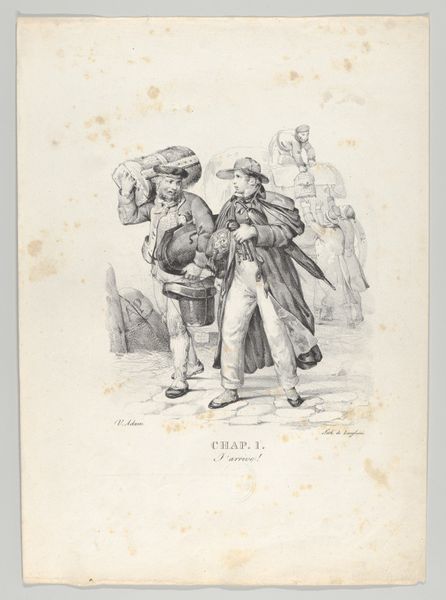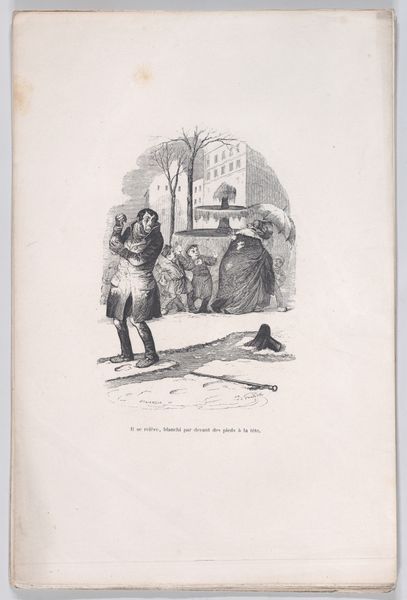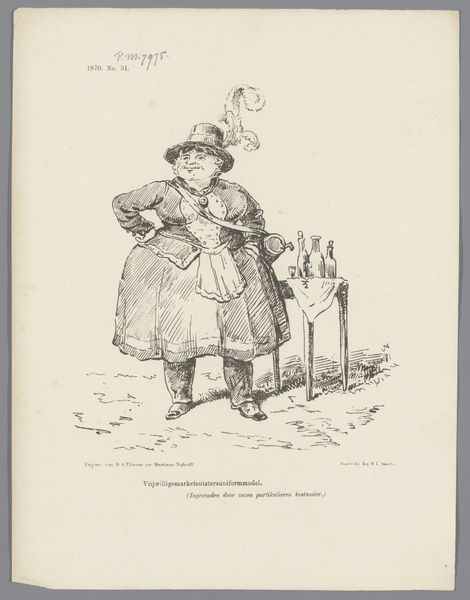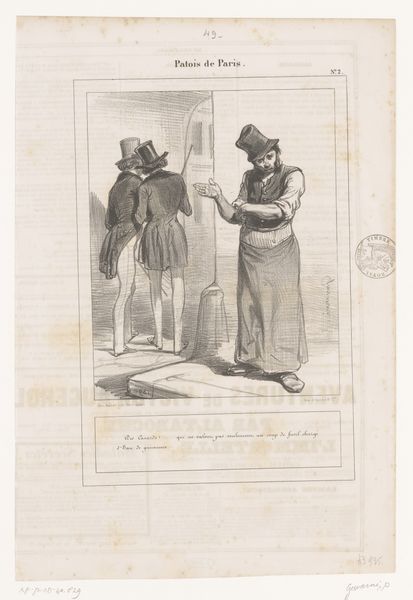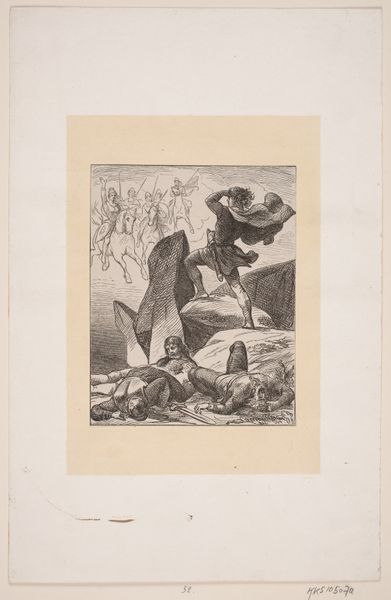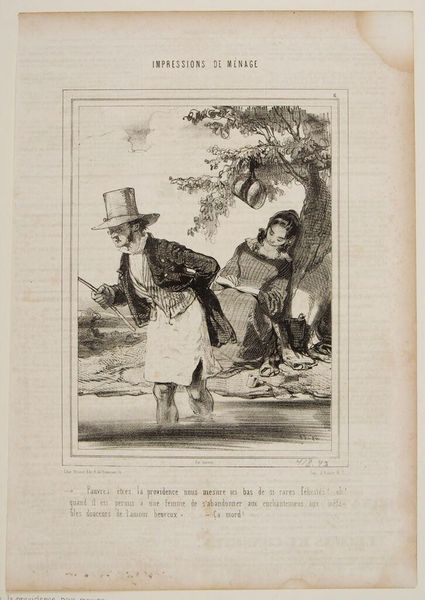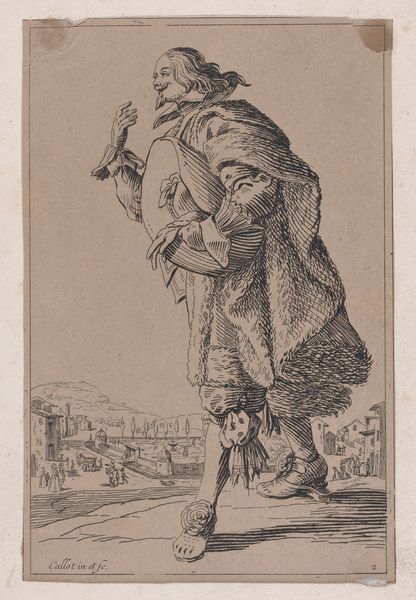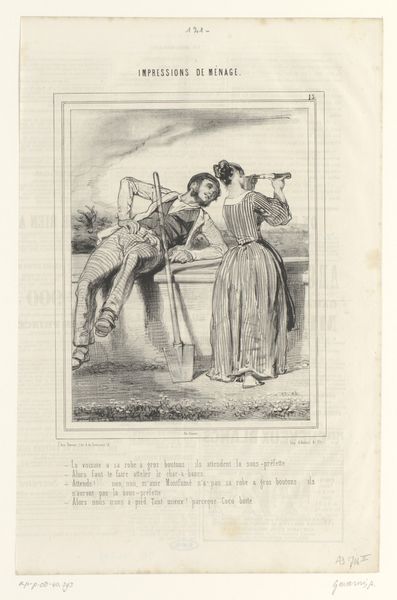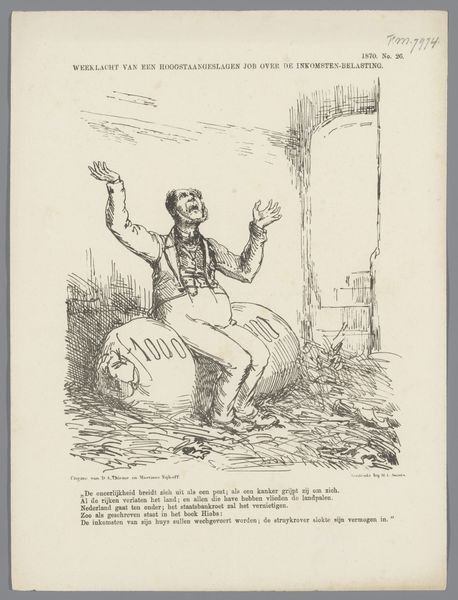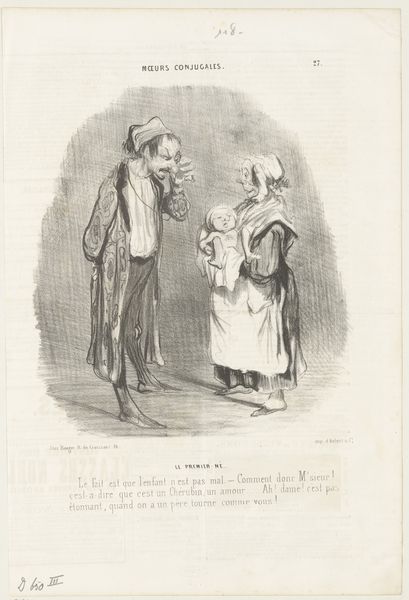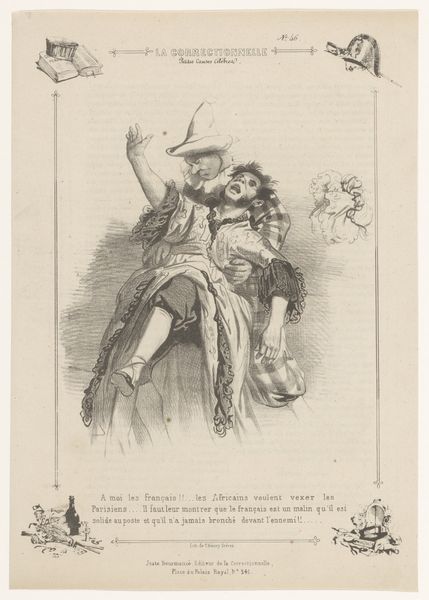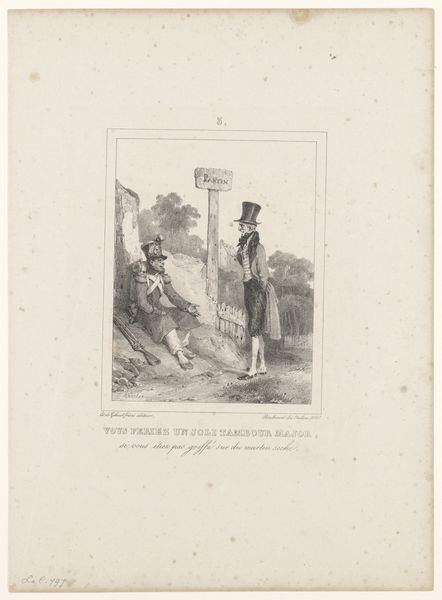
Hulde van het nageslagt / Standbeeld opgerigt te Amsterdam op de Botermarkt / 27 mei, anno 1852 1852
0:00
0:00
Dimensions: height 329 mm, width 254 mm
Copyright: Rijks Museum: Open Domain
This print by W. Slot, made in 1852, depicts a figure holding a skull, echoing Shakespeare’s Hamlet in a moment of melancholic reflection. The skull, a memento mori, is not merely an object but a potent symbol of mortality, urging us to contemplate the transient nature of life. This motif transcends the confines of this image. We see it echoed throughout art history, from ancient Roman sarcophagi to Renaissance vanitas paintings. Each iteration carries a similar message, yet adapted to its cultural context. The enduring appeal of the skull speaks to its power to evoke existential anxieties and profound introspection. Consider the dance of death, the Danse Macabre, prevalent in medieval art. Here, skeletons lead the living, reminding all of death's inevitability, regardless of social status. The persistence of this symbol reveals a collective, subconscious preoccupation with mortality. It is a visceral reminder that has resurfaced, evolved, and taken on new meanings across time.
Comments
No comments
Be the first to comment and join the conversation on the ultimate creative platform.
